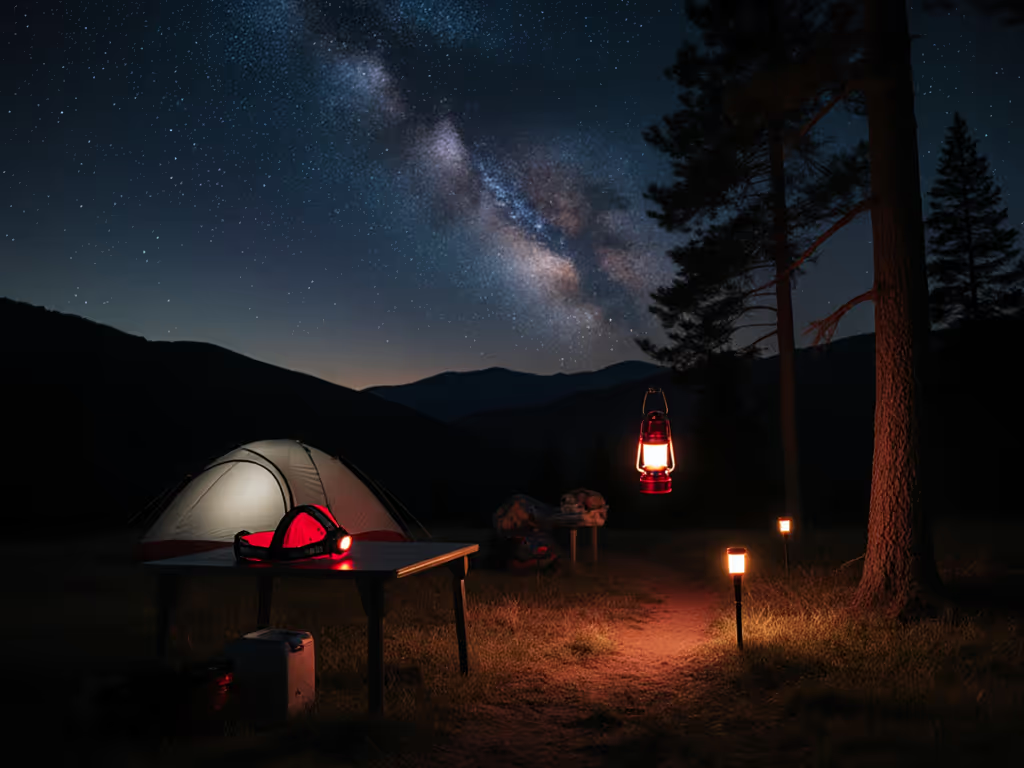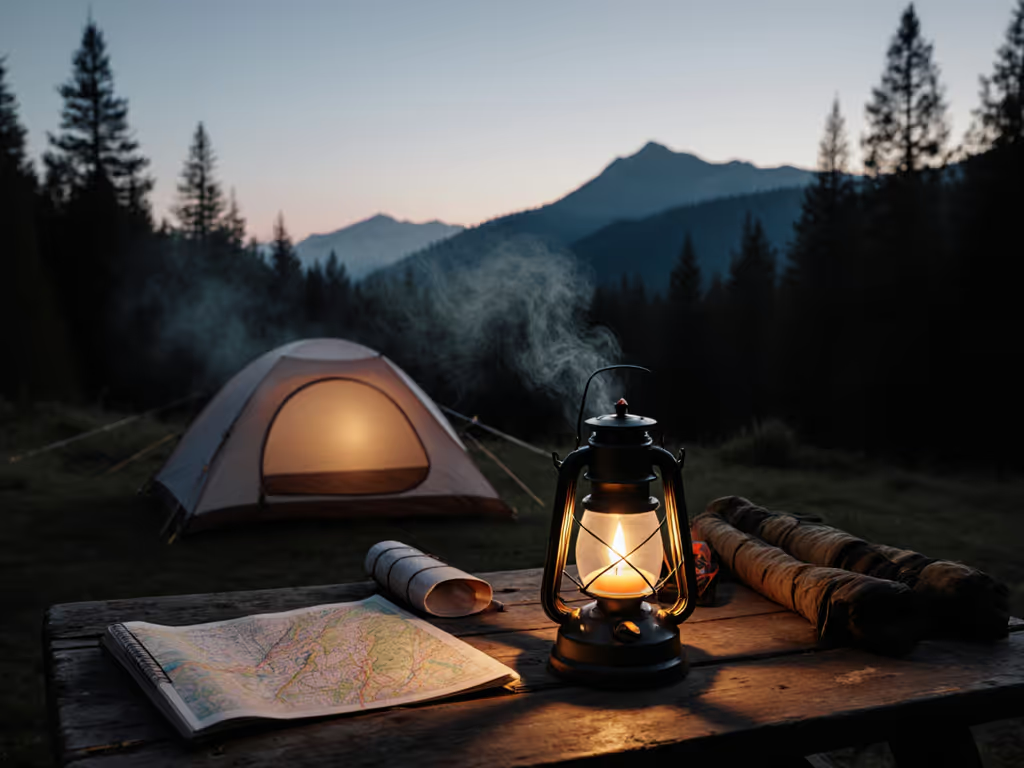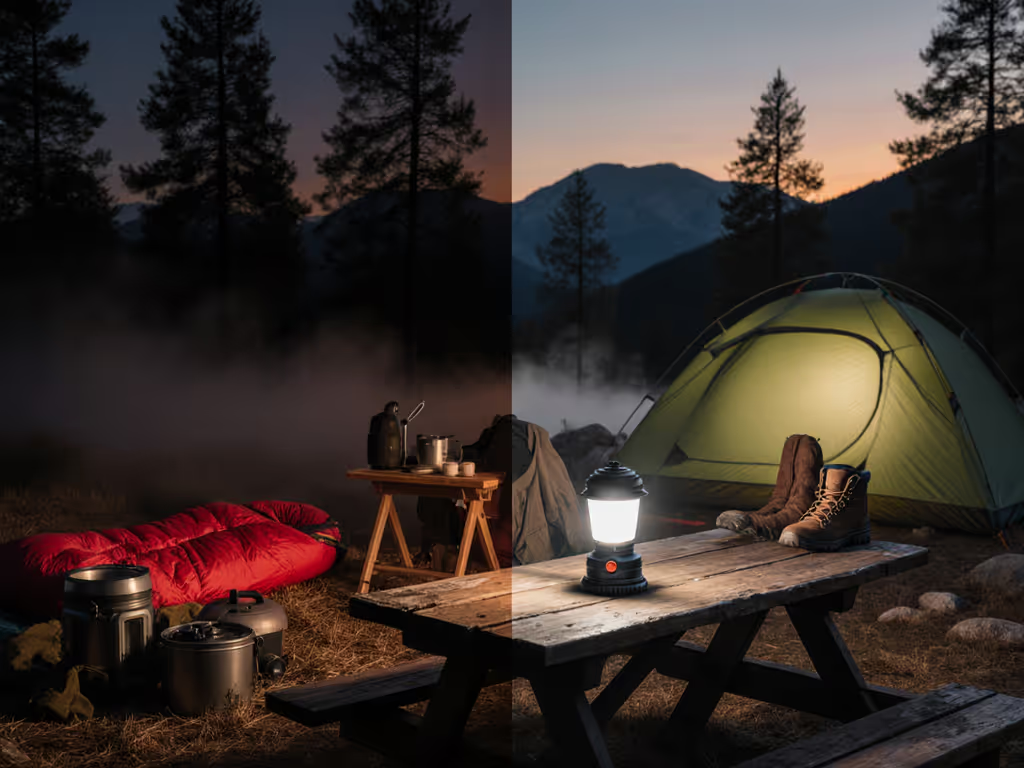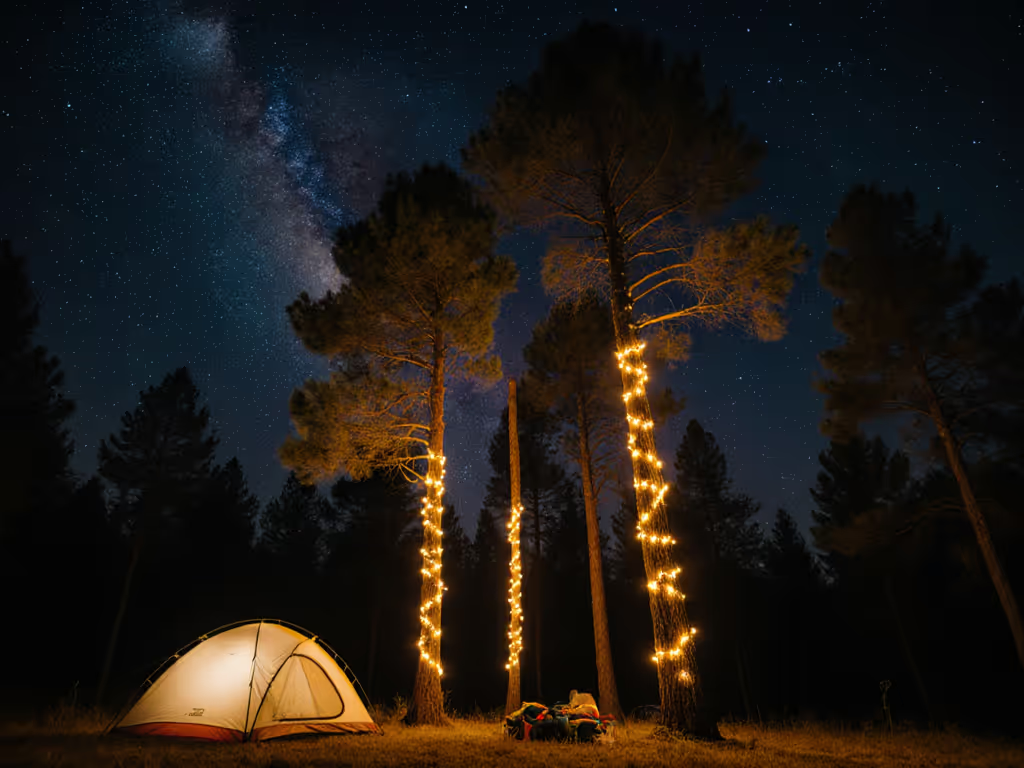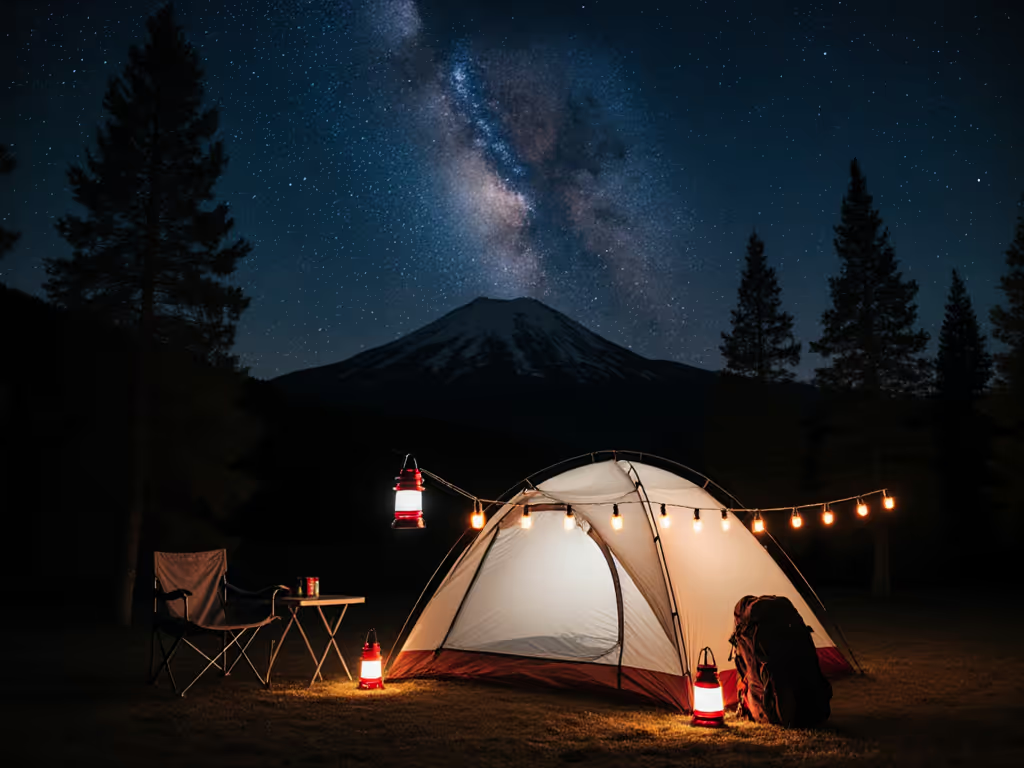
Desert-Proof Tent Camping Lights: Beat Heat Preserve Night Vision
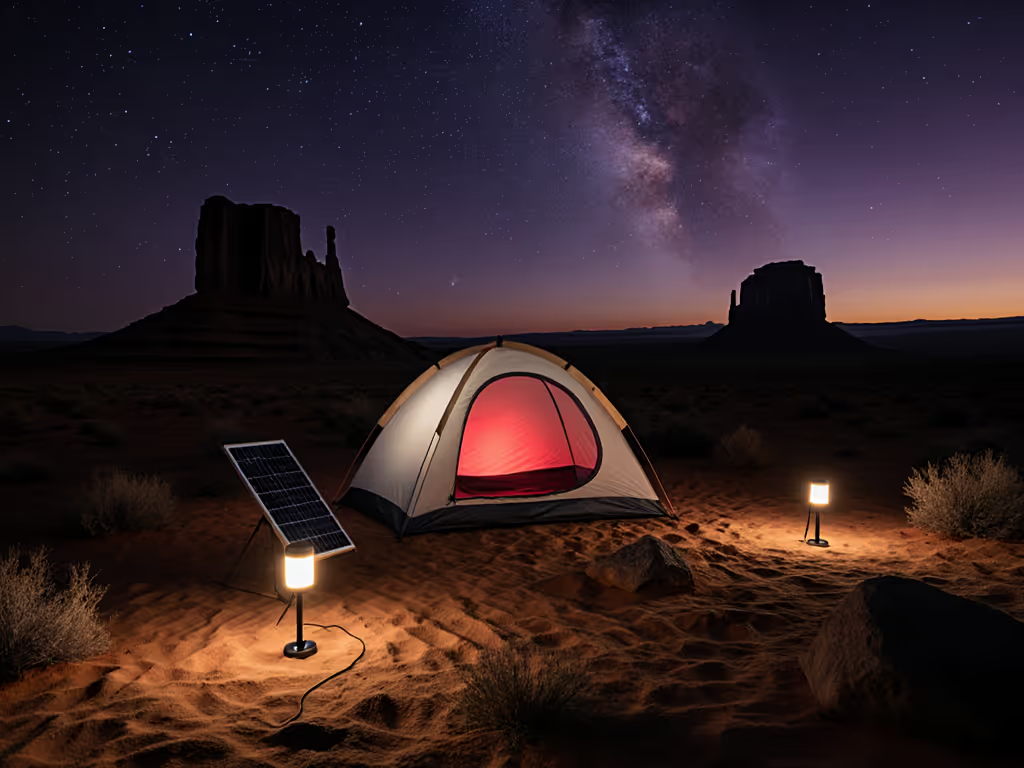
Planning desert camping means confronting unique lighting challenges: relentless heat degrades batteries, low humidity accelerates static buildup, and fine sand infiltrates every seam. Tent camping lights that fail in arid environments don't just inconvenience, they compromise safety, sleep, and the very stars we seek. Arid environment lighting requires thoughtful engineering where warmth and restraint matter more than raw lumens. I've seen too many campers return from canyon trips frustrated by blown circuits or wakeful children under harsh glare, reminders that light should serve people and place, never dominate them.
Gentle light makes every voice easier to hear.
Through years of field testing in Mojave heatwaves and Sonoran dust storms, I've refined solutions balancing desert durability with human needs. Below, we address your most pressing concerns with evidence-led strategies.
Why do my rechargeable lantern batteries die faster in desert heat?
Extreme temperatures are the silent killer of camping lighting. Lithium-ion batteries (common in modern tent camping lights) suffer significant capacity loss above 35°C (95°F). A unit rated for 50 hours may deliver just 20 in 43°C (110°F) conditions, as chemical reactions accelerate degradation. For a full breakdown of battery chemistries and long-term costs, see our rechargeable vs disposable batteries. Field-tested insight: Store batteries in shaded, insulated containers (like a foil-lined cooler) rather than direct-sun car trunks. One summer in Death Valley, I kept spares wrapped in a damp bandana inside my sleeping pad, a simple evaporative cooling method that preserved 30% more charge.
Critical practice: Avoid charging batteries above 40°C. Heat multiplies internal resistance, causing dangerous swelling. USB-C power banks with passive cooling (like vents or metal casings) outperform sealed units here. For true heat-resistant camping lights, prioritize models with external battery access, swapping cells avoids thermal shutdowns during critical cooking hours.

Can warm-white lighting really work in pitch-black deserts?
Absolutely, and it's essential for preserving night vision. Many assume deserts need cool-white (5000K+) light for "visibility," but research confirms warm light (2700-3000K) maintains rod-cell sensitivity better. In low-humidity environments like deserts, cool light scatters less in dry air yet creates harsher glare against dark sand. Your pupils constrict under blue-heavy spectra, requiring 20+ minutes to readjust to starlight, critical when navigating rocky terrain after dinner. If you're choosing between warm and cool LEDs, our color temperature comparison shows when each spectrum helps or hurts night vision.
I recall a family trip where our toddler's sleep collapsed under a 5000K lantern. Switching to warm 2700K LEDs with a diffuser created campfire-like ambiance that aligned with circadian rhythms. That arid environment lighting tweak meant deeper rest for kids and adults alike. Desert night visibility thrives under warmth: colors appear richer (thanks to high CRI >90), and shadows lose their menace. Pro tip: Use amber modes for midnight bathroom trips, this spectrum minimally disrupts melatonin production while highlighting trip hazards.
How do I protect lights from sand damage?
Sand is the ultimate enemy of electronics. Sand-proof lighting requires three defenses:
- Sealed optics: IPX6+ ratings prevent sand ingress through vents (unlike IPX4, which only handles rain). Look for O-rings around lens assemblies.
- Strategic placement: Position tent camping lights inside mesh vestibules rather than open desert floors. A hanging lantern avoids ground contact where wind-borne grit settles.
- Minimal interfaces: Fewer buttons = fewer failure points. Opt for magnetic docks or twist-dial UIs over exposed ports.
During a Utah monsoon season, I propped a lantern inside a breathable mesh bag, it diffused light while filtering silt. For low humidity lighting setups, wipe lenses with anti-static cloth before deployment. Dry air amplifies static, attracting dust like magnets to screens.
Do red lights truly preserve night vision better than dim white?
Yes, but with caveats. Rod cells (responsible for low-light vision) are nearly blind to deep red (>620nm). However, many "red mode" lanterns emit shallow red (590nm), which still degrades night vision. For true desert night visibility preservation, verify wavelength specs. A lantern with a dedicated red channel (around 630nm) excels here, creating usable light without resetting star adaptation.
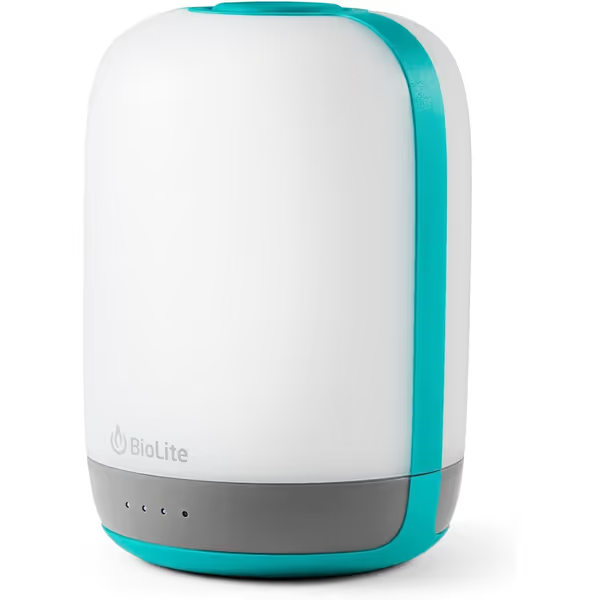
BioLite Alpenglow 500 Lantern
That said, dim warm white often outperforms red for shared camp tasks. Red light distorts colors (imagine sorting first-aid supplies!), while 5-lumen 2700K light maintains peripheral awareness. Dim is a setting, not a compromise, use the lowest brightness where faces remain visible. Remember: conversation flows best when details emerge softly, not under interrogation-style beams.
Why does my solar-charged lantern underperform despite constant sun?
Sun-drenched deserts deceive with "100% solar charging" claims. Reality: panel efficiency drops 0.5% per °C above 25°C. At 49°C (120°F), a 20% efficient panel may operate at 15%. Additionally, fine dust on panels (a near-constant in deserts) slashes output by 40%. See our field test on solar charging efficiency to compare panels under real desert conditions.
One compact lantern demonstrates pragmatic desert adaptation: its matte-finish solar panel resists dust buildup better than glossy alternatives, and its 2000mAh battery provides reserve capacity for cloudy mornings. Key strategy: Charge during dawn/dusk when panels run cooler. Never rely solely on solar. Instead, pair with a power bank stored in shade. For heat-resistant camping lights, prioritize units with removable batteries you can swap when solar falls short.

MPOWERD Luci Pro Lux
How do I prevent light pollution in dispersed desert camps?
Desert silence amplifies light trespass. Unlike forests, open terrain allows beams to travel kilometers, disrupting wildlife and neighboring camps. Sand-proof lighting isn't just about hardware; it's about etiquette. Follow these principles:
- Shield rigorously: Direct light downward using tent walls or camp tables. A $2 clip-on fabric shade (tested on a compact lantern) cut glare by 70%.
- Embrace directional beams: Overhead tent camping lights create harsh shadows. Instead, use low-mounted lanterns (<=30 cm off ground) along paths.
- Adopt "dark sky hours": Post 9 PM, switch to red or 10-lumen modes. In Arizona's Gold Butte, rangers note 80% fewer complaints when camps adopt this. For more best practices, see our night sky protection checklist.
Final Thoughts: Lighting as Landscape Stewardship
Desert lighting demands humility. It's not about conquering darkness but collaborating with it, using warmth to honor circadian rhythms, shielding to respect neighbors, and restraint to preserve starlight. When your arid environment lighting setup fades into the background, conversations deepen, sleep comes easier, and the Milky Way reveals itself.
I still carry that lesson from my first desert family trip: dim is a setting, not a compromise. By choosing tools that serve both people and place, we transform survival into sanctuary. Share your desert lighting wisdom, we're all students beneath these vast, starlit skies.

